
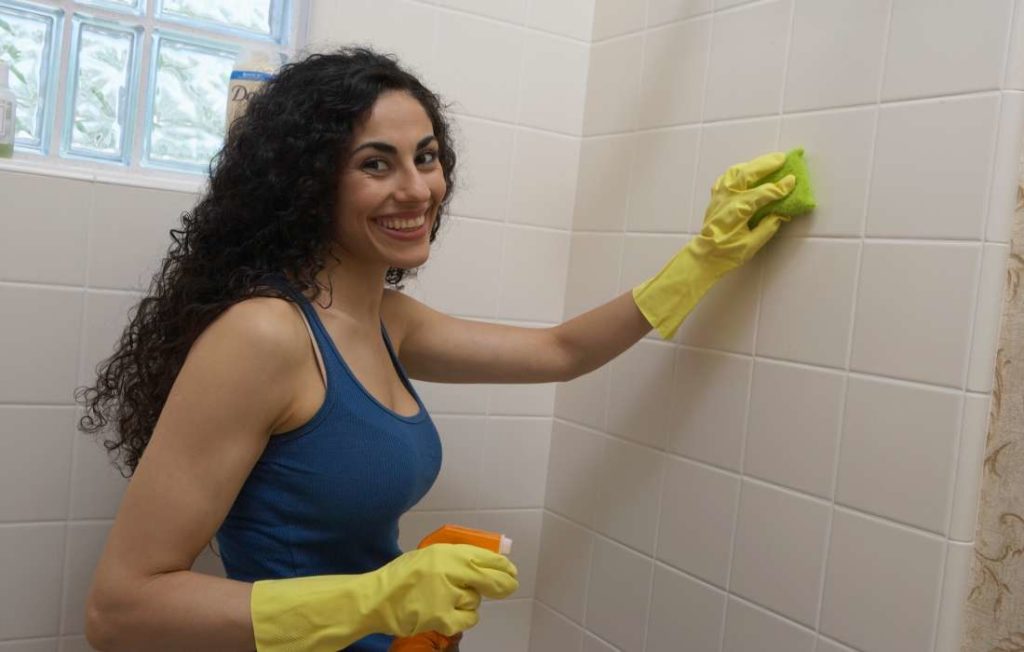 Colorful tiles can make any part of the house look better. One of their biggest advantages is low-maintenance, but that is not the case for all types of tiles.
Colorful tiles can make any part of the house look better. One of their biggest advantages is low-maintenance, but that is not the case for all types of tiles.
Different kinds come with their specifics, and frequent use will inevitably leave their mark, regardless of the material’s durability. With proper regular care, though, you can extend the tiles’ lifespan. Still, it’s good to have the most efficient cleaning approach, and you can find out what that is below.
Cleaning Tips For The Most Popular Types Of Tiles
Ceramic Tiles
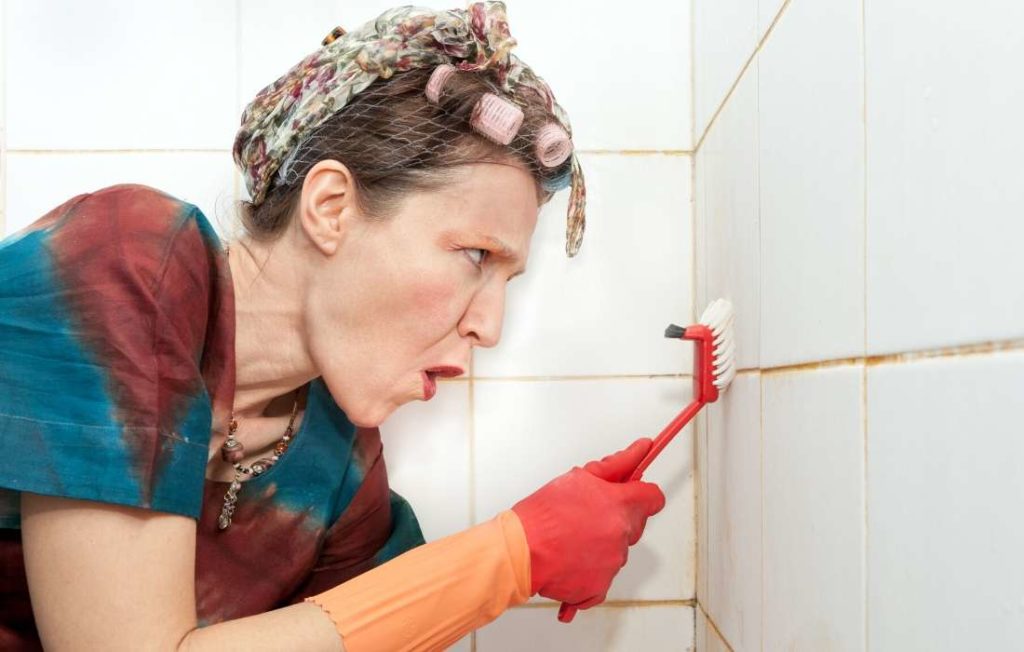 Quite popular due to their long lifespan, stain-resistance, and fairly low maintenance, these tiles are a good choice for your bathroom or kitchen. When it comes to cleaning, once a week will be enough, but you can increase that number for high-traffic areas. The steps are pretty simple:
Quite popular due to their long lifespan, stain-resistance, and fairly low maintenance, these tiles are a good choice for your bathroom or kitchen. When it comes to cleaning, once a week will be enough, but you can increase that number for high-traffic areas. The steps are pretty simple:
- Use the vacuum cleaner to eliminate all debris; otherwise, you risk spreading them during the cleaning.
- A few drops of dish detergent mixed in a bucket with lukewarm water will be enough to make your ceramic tiles sparkling again. If you wish to make the solution more efficient, then you can also add white vinegar. The latter can eliminate greasy stans quite fast, giving a nice shiny look to the ceramic surface.
- If you are cleaning ceramic floors, then better do it with microfibre mop. It can evenly spread the water without trapping parts of it into the grout. Use a clean rug or microfiber cloth for walls and other areas.
- You can dry with a clean towel for a perfect finish or let air dry if you’d prefer.
Tip: In case your ceramic tiles are visibly stained, and in need of a deeper cleaning, pretty much any all-purpose cleaner can be of use. The grout, however, usually requires some manual work and a little bit more patience. You can whiten it quickly with products like baking soda, hydrogen peroxide, or even toothpaste, scrubbed on gently with a soft brush.
Porcelain Tiles
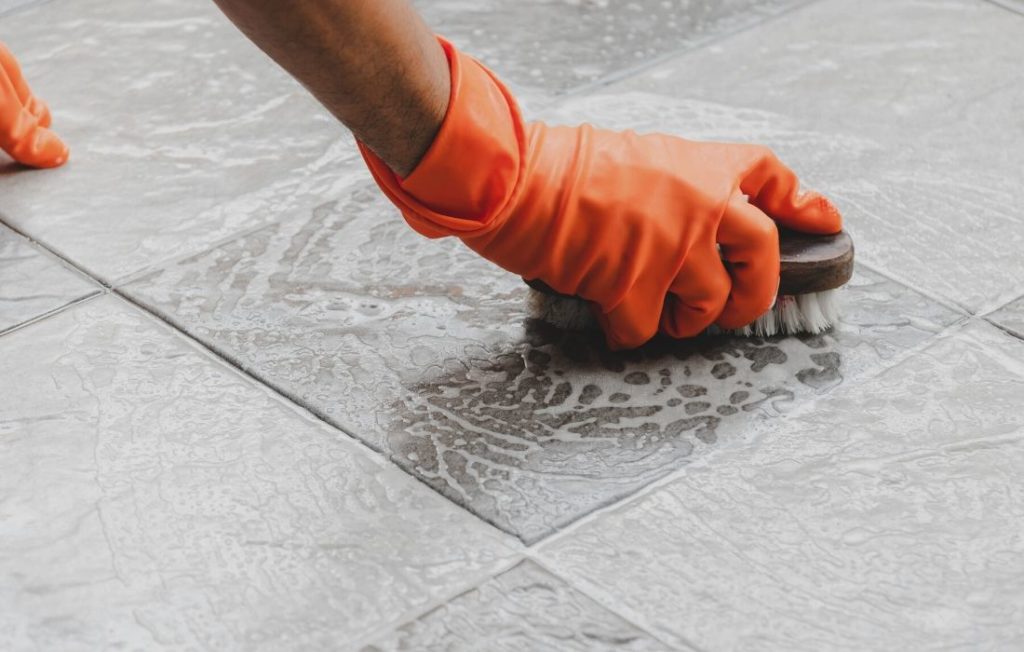 While both porcelain and ceramic tiles are mainly made of clay, the porcelain tiles are considered to be more refined and durable. Thanks to the similarities between the two kinds of tiles, they can both be cleaned with the same method. However, it is good to take into consideration what type of porcelain tiles you have to clean – unglazed, glazed, or textured.
While both porcelain and ceramic tiles are mainly made of clay, the porcelain tiles are considered to be more refined and durable. Thanks to the similarities between the two kinds of tiles, they can both be cleaned with the same method. However, it is good to take into consideration what type of porcelain tiles you have to clean – unglazed, glazed, or textured.
The main difference between the first and the second is the added liquid glass layer, which makes the glazed porcelain tiles appear glossy and well-polished. As for the textured tiles, they can resemble marble, as well as other natural stone or hardwood.
Consider the following tips when cleaning your porcelain tiles:
- Unglazed tiles – Since they lack the layer of glass protection, they are prone to collect dust and other particles easily. Therefore, don’t forget to vacuum or dust everywhere prior to washing. Cleaning with mild liquid dish soap, vinegar, or other non-chemical solutions is fine, as long as you do not use too much water and dry the tiles after. Spills are also more likely to leave their mark, so it is good to take care of those right away.
- Glazed tiles – You don’t have to worry about excessive moisture here, as glazed porcelain tiles are well-protected. However, that shiny glass surface can be easily scratched by sand or other small particles, so make sure those are always removed in full. Also, do not use wire or other types of hard brushes for scrubbing the surface. Both homemade and chemical cleaners are suitable, although it is good to check the label to be sure.
- Textured tiles – Stick to non-abrasive types of cleaners to protect the structure of the tiles. It is alright to gently scrub stained areas with a softer brush. Wash well with water afterward, so all of the cleaners can be removed before drying.
Terracotta Tiles
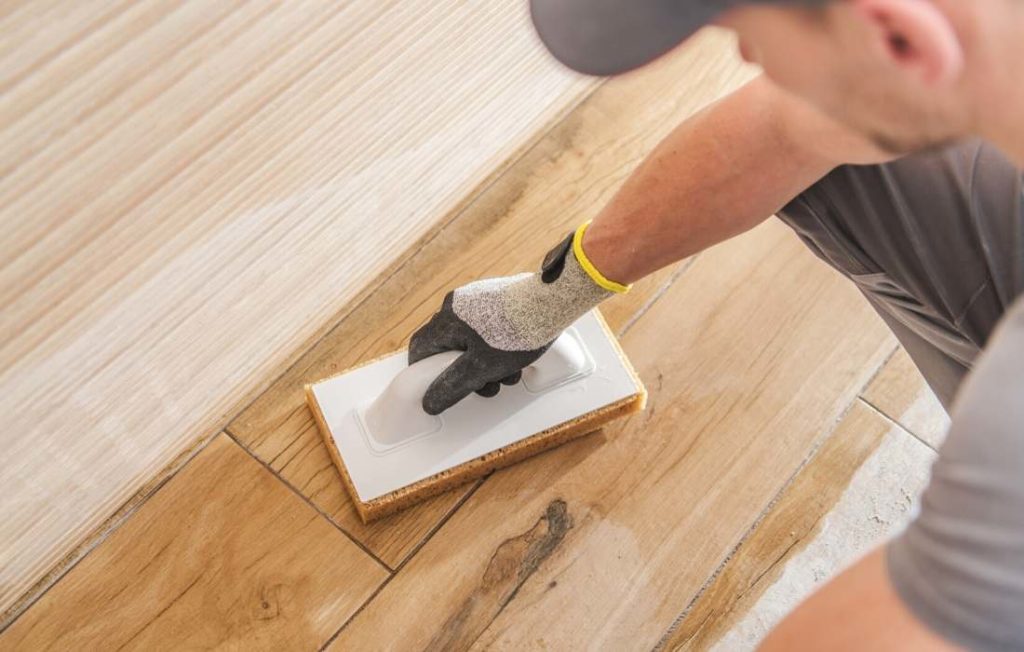 Terracotta tiles are not that hard to look after, and they can make any room feel cozy and warm. Just like the unglazed porcelain tiles, though, these types of tiles have a porous surface where dust, hair and other dirt can remain trapped. It will also be tough to get rid of stain marks over time, which makes terracotta tiles a bit harder to maintain. You can follow this simple routine for general cleaning:
Terracotta tiles are not that hard to look after, and they can make any room feel cozy and warm. Just like the unglazed porcelain tiles, though, these types of tiles have a porous surface where dust, hair and other dirt can remain trapped. It will also be tough to get rid of stain marks over time, which makes terracotta tiles a bit harder to maintain. You can follow this simple routine for general cleaning:
- Vacuum or sweep to get rid of the trapped dirt.
- If the tiles look dingy and stained, you can use a special terracotta cleaning product. Otherwise, a ph neutral cleaner will be enough to clean the surface, such as dishwashing liquid. You can check for others in the store, as they are not hard to find.
- Wash the surface several times afterward.
Note: Terracotta tiles can also be sealed to make their surface more durable and easy to maintain. This allows for a deeper steam cleaning, which is best done by a professional who can provide and properly use the specialized equipment. Still, constant use can weaken the protective layer’s structure over time, even with the best cares. This is why it is good to consider resealing your terracotta floors every few years.
Natural Stone Tiles
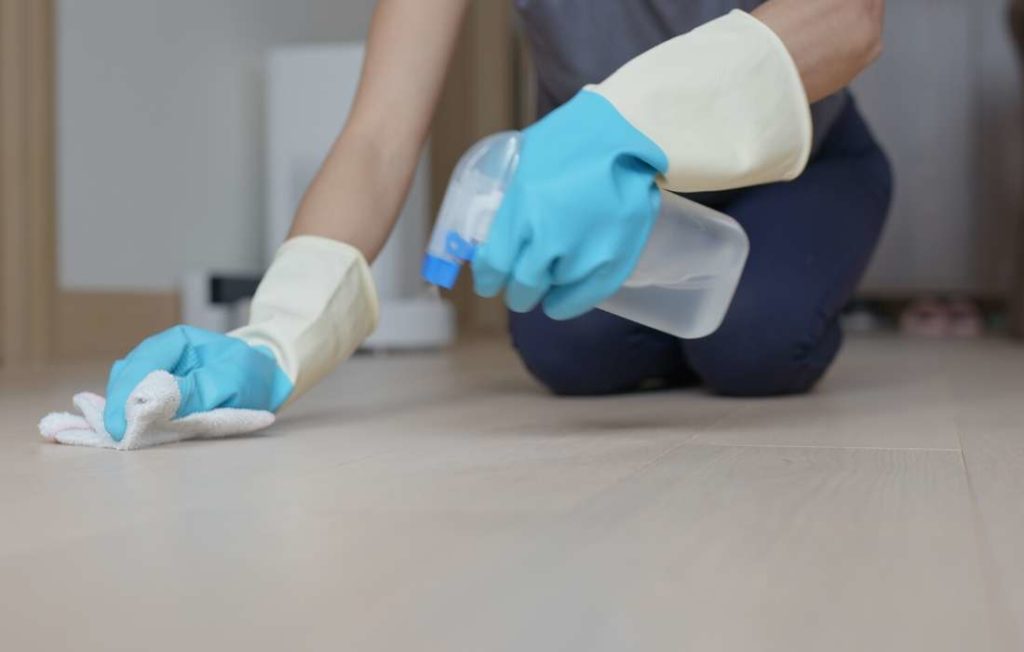 Natural stone tiles are known to require a bit more maintenance and cares than other kinds of tiles. The material does not favor chemical-based cleaners, as well as some natural ones like vinegar or lemon juice. To avoid damages, you have to choose wisely by checking the label and always testing on a small area of the tile first.
Natural stone tiles are known to require a bit more maintenance and cares than other kinds of tiles. The material does not favor chemical-based cleaners, as well as some natural ones like vinegar or lemon juice. To avoid damages, you have to choose wisely by checking the label and always testing on a small area of the tile first.
Here are some tips on how to best clean your natural stone tiles:
- Marble – The beautiful tile color can easily change due to spills or even one treatment with the wrong type of cleaning agent. The porous structure increases the tiles’ ability to absorb all kinds of liquids, which makes it risky to add marble tiles in the kitchen. This also means that you need to be careful with the amount of water you use during the cleaning. To stay on the safe side, rely only on neutral washing agents. Dry and polish to avoid water streaks.
- Granite – These types of tiles are solid, and they can endure a lot. While you won’t have to worry so much about a scratch or two, stains are another matter. Spills need to be blotted right away, especially from acidic liquids. As for general cleaning and maintenance, water and mild detergent will do the trick. Specialized natural stone cleaners will also be beneficial for granite tiles.
Bottom Line
As you can see, it is not so hard to look after the different types of tiles. Given the higher price of natural stone and other similar materials, it is not a good idea to risk with untested products or techniques. Professional cleaning is always a safe option, which can help maintain the tile’s perfect look.
